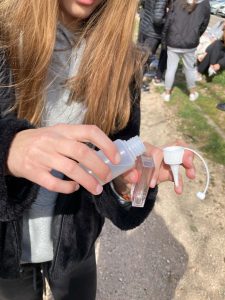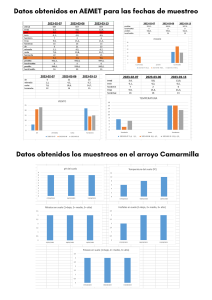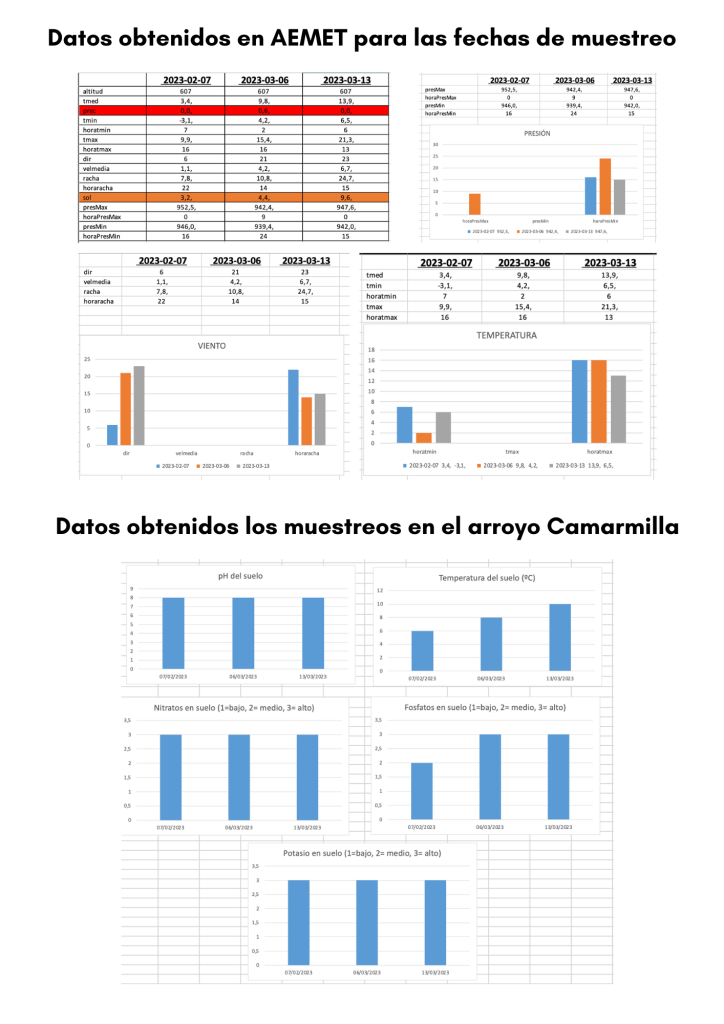Climate Detectives Projects 2022-2023
Project title: Does air pollution affect the banks of the Camarmilla?
Team: Los terraclimáticos del Pedraza
IES Francisca de Pedraza Alcalá de Henares Spain 31 Student’s age: 14-15 years old, 16-17 years old
We want to check whether air pollution in Alcalá de Henares affects the quality of the soil on the banks of the Arroyo Camarmilla stream before and after it has rained.
Queremos comprobar si la contaminación del aire en Alcalá de Henares afecta a la calidad del suelo de la ribera del Arroyo Camarmilla antes y después de que haya llovido.

The main problem is to detect how air quality, climate and rainfall affect the soil quality of the Camarmilla stream bank.
This project is planned to be carried out by 4th ESO C in the subjects of Geography and History and Biology and Geology. A total of three teachers and 31 students will participate in the process.
At least 12 soil samplings are planned:
– Four on days where there has been no precipitation at least one week before.
– Four on precipitation days
– Four the day after the last day of rainfall (always try to choose days after a more or less similar rainfall period, if not possible, the amount of rainfall will be taken into account).
For each day that a soil sample is taken, data on precipitation, temperature and air pollution (particulate matter and gases) for the same day, as well as for the day before and the day after, shall be extracted from AEMET.
The first day of sampling is planned to be attended by the whole class to show them how to proceed and will take place during class time. For the rest of the sampling, groups will be organised and will take turns.
When all data have been collected, a statistical analysis by two-way ANOVA will be performed to compare the following correlations and study their statistical significance:
– Precipitation level and soil quality
– Level of air pollution and soil quality
El problema principal es detectar cómo afecta la calidad del aire, el clima y las precipitaciones a la calidad del suelo de la ribera del arroyo Camarmilla.
Este proyecto está planteado para ser realizado por 4º ESO C en las asignaturas de Geografía e Historia y Biología y Geología. En total van a participar en el proceso tres profesores y profesoras y 31 alumnos y alumnas.
Se prevén realizar, al menos 12 muestreos de suelo:
• Cuatro en días en los que no haya habido precipitación al menos una semana antes
• Cuatro en días de precipitación
• Cuatro el día posterior al último día de precipitación (intentando siempre elegir días tras un periodo de lluvia más o menos similar, si no es posible, se tendrá en cuenta el volumen de precipitación)
Para cada día que se tome una muestra de suelo, se extraerán de la AEMET los datos de precipitación, temperatura y contaminación del aire (partículas y gases) del mismo día, así como del día anterior y el posterior.
El primer día de muestreo está previsto asistir con toda la clase para mostrarles cómo se va a proceder y se realizará durante el horario de clases. Para el resto de muestreos se organizarán grupos que se turnarán.
Cuando se hayan tomado todos los datos, se realizará un análisis estadístico por ANOVA de dos vías para comparar las siguientes correlaciones y estudiar su significación estadística:
• Nivel de precipitación y calidad del suelo
• Nivel de contaminación del aire y calidad del suelo

We were able to complete a single data collection cycle of pre-rainy day (7 February 2023), rainy day (6 March 2023) and post-rainy day (13 March 2023). Since, during our sampling period (February-April) there has been only one rainfall event. With the data obtained we consider that it is not possible to draw any conclusions. The graphs show the results of the measurements for each of the parameters on each of the dates and a visual comparison with data for the same dates downloaded from AEMET.
Hemos podido completar un único ciclo de toma de datos de previo a día de lluvia (7 de febrero de 2023), en día de lluvia (6 de marzo de 2023) y un día posterior a las precipitaciones (13 de marzo de 2023). Ya que, durante nuestro periodo de muestreo (febrero-abril) sólo ha habido un evento de precipitaciones. Con los datos obtenidos consideramos que no es posible establecer ninguna conclusión. En los gráfico se muestran los resultados de las mediciones para cada uno de los parámetros en cada una de las fechas y una comparativa visual con datos para esas mismas fechas descargados de AEMET.
We want to maintain the measurements of this project for two school years in order to obtain sufficient results and to be able to make a meaningful comparison between our data obtained and the data downloaded from the AEMET and Sentinel 2 satellite websites.
Queremos mantener las mediciones de este proyecto a lo largo de dos cursos escolares para poder obtener resultados suficientes y poder hacer una comparativa significativa entre nuestros datos obtenidos y los datos descargados de las webs de AEMET y del satélite Sentinel 2.
This project was automatically translated into English.
Projects are created by the teams and they take the full responsibility of the shared data.
← All projects





